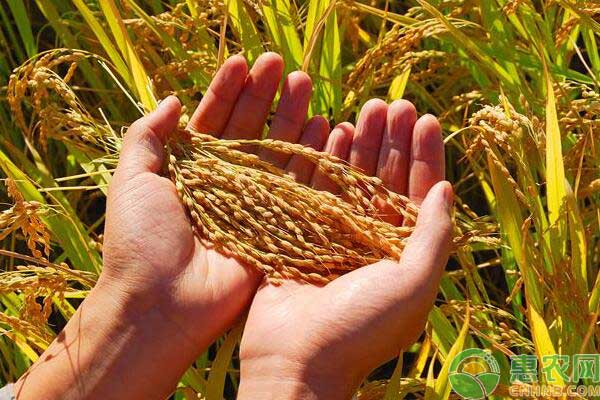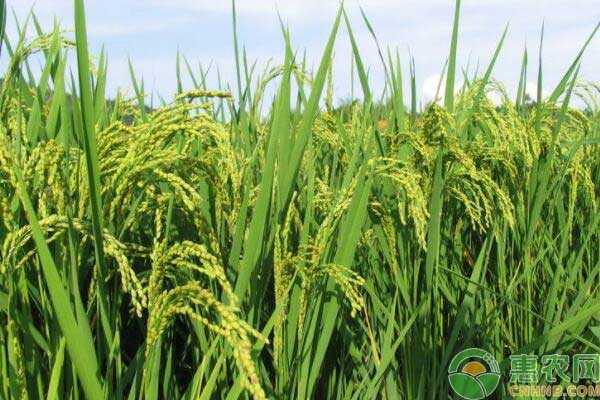Rice is a staple food on our table, but some rice is delicious and some are not good. What is the reason? Today, Huinong.com has compiled a large-scale cultivation method for northeast rice to sort out the high-yield cultivation techniques of rice in Northeast China. Come and see. Rice, the second largest food crop in Liaoning Province after corn. Since the founding of the country, the area planted with rice in Liaoning has increased nearly 10 times. And there are many local brands of rice. In 2010, Sujiatun District implemented 10 national-level 10,000-mu high-yield demonstration areas. How to ensure the high-quality production of rice is not only related to the national food security, but also related to the production value and economic income of farmers. Therefore, the scientific cultivation of rice is also an important factor to ensure social stability and harmony. First, rice preparation before planting 1. Selection and treatment of varieties According to local conditions, high-yield and high-quality varieties resistant to pests and diseases, such as Liaoxing No.1 and Yanjing47, should be selected. Before rice planting, special treatment of rice seeds is needed. First, the rice seeds should be fully air-dried, and the metabolism of rice seeds should be promoted by increasing the activation rate of rice enzymes. Improve water absorption and promote early germination. Second, the rice seeds should be disinfected in a suitable way. Before sowing, you can choose soaking seeds or bacteria to clear the seeds, and disinfecting the seeds in combination with soaking seeds, which can effectively prevent diseases caused by seed-borne bacteria. Finally, the seeds should be quickly germinated. 2. Preparation of the seedbed It is necessary to choose a seedling bed close to the water source, fertile soil, sunny leeward, no pests and weeds. Early fine land preparation, so that the soil is finely broken without large clods. The preparation of nutrient soil, 55% of the dry soil plus 45% High-quality rotted farmyard manure, supplemented with appropriate amount of rice sorghum, and mixed separately after sieving. The seedbed is generally 10~15m long and 1.8m wide. The 15m seedbed needs 500kg of nutrient soil. Second, the work in rice breeding Dry and strong. When sowing, it is necessary to spread the oysters. It should be based on the local climate, usually in the middle of April, when the temperature is stable above 5 °C. The seeding should be dense and uniform, and the amount of wetted seeds should be 200g/m. The seedlings should be seeded with plastic floppy disks or plastic hard disks. The seeding rate per plate is 125g. Pay special attention to timely ventilation and cooling in case of high temperature, to prevent high temperature burning. In the seedling stage, according to the occurrence of pests and diseases, suitable pesticides should be selected to prevent seedling pests and diseases, prevent pests and diseases from being introduced into the fields, and reduce the incidence of pests and diseases in the field. 3. Preparation before rice transplanting 1. Apply sufficient base fertilizer to level the land The base fertilizer adheres to the organic fertilizer, and is applied according to the soil fertility nitrogen, phosphorus and potassium. Before the transplanting, the cultivated land should be leveled to make the land soft and flat. Before the rotary tillage, all the farmyard manure and 35% nitrogen, 100% phosphorus, and 50% potassium fertilizer used in combination should be evenly spread on the surface of the field, and then rotary tillage is carried out. 2. Grasp the time, transplant rice seedlings Dry nursery is suitable for early planting. Before rice cultivation, rice seedlings must be carefully observed. Find the intermediate rice. According to the actual situation of rice fields in various regions, the amount of fertilizer is adjusted reasonably. Generally, when the average daily temperature is stable at 15 °C, rice can be transplanted. Choosing the right time, transplanting rice earlier, can make rice seedlings grow and tiller early, effectively shortening the time of rice field returning. This link must grasp the time, rationally plant the seedlings, can not miss the best cultivation time. Find the relationship between the appropriate period and the early insertion. And have an accurate and in-depth understanding of the appropriate transplant. At the right time, the implementation of rice early insertion is to accurately grasp the age of transplanting. In order to prevent the occurrence of cockroaches and other problems, always choose the appropriate seedlings for planting. 3. Reasonable close planting to grasp the rationality and scientificity of planting seedling density . The usual density is a hole pitch of 17 cm. The line spacing is 30cm. If the paddy field is insufficiently fertilized, the spacing of the seedlings should be appropriately adjusted; if the paddy field is sufficiently fertile, the spacing of the seedlings can be appropriately reduced. Fourth, the work of rice paddy management Fertilize Apply urea 10~15kg/667m, phosphate fertilizer 15~20kg/667m, potash fertilizer 4~5kg/667m, zinc sulfate 1.5kg/667m for top dressing. The tiller is divided into two times. The first time is after the seedling is slowed down. Generally, the urea is applied after about 10 days of transplanting (25% of the total nitrogen) plus all the zinc fertilizer to promote effective tillering. The second time is in the booting stage. During the period, the application of the attacking fertilizer, urea (20% of the total nitrogen) plus 50% potassium fertilizer, to improve the seed setting rate and promote the fullness of the grain. 2. Reasonable irrigation In the management of water, it is beneficial to return to the green during the greening period by appropriate deep water irrigation; shallow water irrigation is carried out at the booting stage, the beginning of the earing stage and the heading stage, and the rest of the period is mainly to maintain moistness. In the tillering period, shallow water is required to promote sputum, and appropriate tillering and controlling the sputum in the late tillering stage to increase the permeability and promote the healthy growth of the rice; in the dry season, it is necessary to resist drought irrigation; during the yellow ripening period, the field is drained to promote maturity; when harvesting, the field is water-free. 3. Pest control During the growth of rice, there are many threats of pests and diseases. The main diseases are rice false smut, rice blast, bacterial leaf blight, sheath blight, etc.; the main pests are rice planthopper, armyworm and so on. In the prevention and control of rice pests and diseases, it is necessary to adhere to the plant protection work policy of “prevention first, comprehensive preventionâ€. Based on the cultivation of pest-resistant varieties, the comprehensive control measures based on the cultivation of Zhuangjing and supplemented by pesticide protection. During the growth of rice, for these pests and diseases, it must be discovered in time, the right medicine, the use of high-efficiency, low-toxic, residue-free pesticides, to ensure the healthy growth of rice seedlings, rice harvest and high yield. The above is the high-yield cultivation technology of rice in Northeast China compiled by Huinong. I hope to help you grow rice. Ring Die Pellet Machine,Feed Processing Machine,Pellet Machine Of Animal Feed,Feed Pellet Making Machine Shandong Longze Mechanical Equipment Co.,Ltd , https://www.pelletmachinefactory.com



